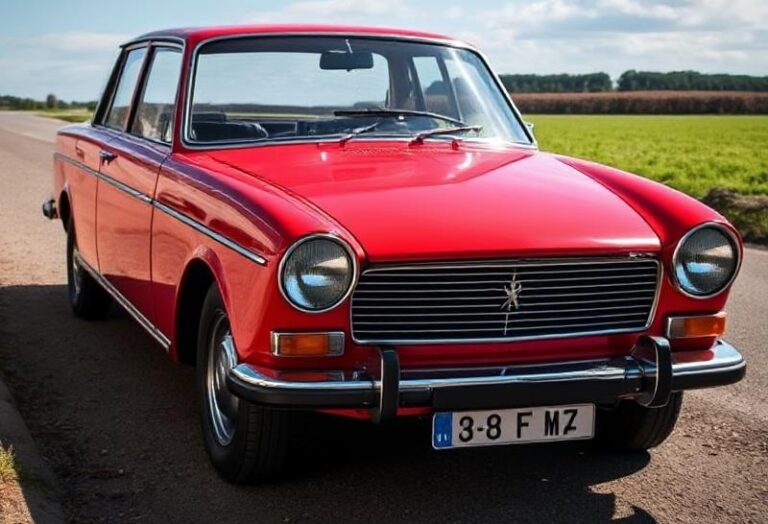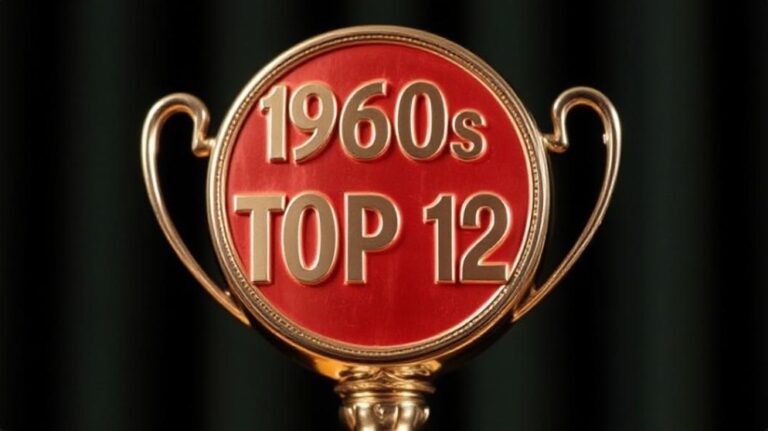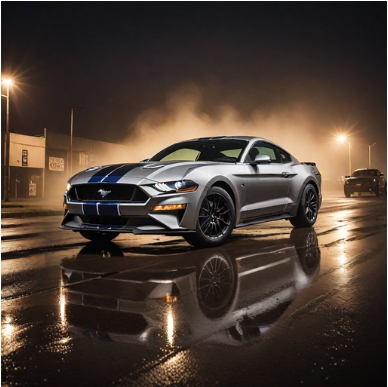The Cat Perfected: Charting the Evolution of the Jaguar E-Type (Jaguar XK-E)
When the Jaguar E-Type (known as the XK-E in North America) debuted at the 1961 Geneva Motor Show, it wasn’t merely a new car; it was a seismic event. Famously described by Enzo Ferrari as “the most beautiful car ever made,” its combination of breathtaking aesthetics, racing-derived performance, and a surprisingly accessible price tag sent shockwaves through the automotive world. Yet, the car that rolled off the production line in 1975 was a markedly different machine from the lithe, pure sports car of 1961. The story of its evolution is a fascinating chronicle of engineering progress, market adaptation, and the relentless pressure of government regulation. Spanning three distinct series over a 14-year production run, the E-Type’s journey saw it transform from a raw, uncompromising sports car into a refined and powerful grand tourer.
The Genesis: D-Type DNA
To understand the E-Type, one must first look to its predecessor, the Le Mans-winning D-Type racing car of the 1950s. Aerodynamicist Malcolm Sayer, a pioneer in applying aviation principles to automotive design, was the genius behind the D-Type’s slippery form. He employed a revolutionary monocoque construction for the main tub, where the body and chassis are a single, stressed unit, with a tubular front subframe carrying the engine and front suspension. This advanced, lightweight, and rigid structure was carried directly over to the E-Type, giving it an engineering pedigree that few road cars could match. It was, in essence, a race car tamed for the street.
.
THIS could come in handy for your auto garage (and everywhere else!):

.
Series 1 (1961-1968): The Purest Form
The Series 1 is widely regarded by purists as the E-Type in its most undiluted and beautiful form. However, even within this first generation, there were significant evolutionary steps.
The Early 3.8-Litre Cars (1961-1964)
The first E-Types were powered by a 3.8-litre version of Jaguar’s legendary XK inline-six engine. Fed by triple SU carburetors, it was rated at 265 horsepower and 260 lb-ft of torque, figures that propelled the car to a claimed top speed of 150 mph—a staggering achievement for the era.
Two initial body styles were offered:
- Open Two Seater (OTS): A classic roadster with a simple convertible top.
- Fixed Head Coupé (FHC): A sleek fastback coupé with a distinctive side-hinged rear hatch.
These early cars are identified by several key features that were later changed. The interior featured bucket seats with minimal adjustment, a textured aluminium-trimmed centre console, and a dashboard full of toggle switches. Mechanically, they used a Moss four-speed gearbox which, notoriously, lacked synchromesh on first gear, demanding a skilled hand. Aesthetically, they are defined by their small, elegant “mouth” or grille opening, glass-covered headlights that flowed seamlessly with Sayer’s aerodynamic lines, and taillights mounted above a delicate, split rear bumper. Enthusiasts also point to the “flat floors” of the very earliest models, a design that offered less footwell space and was soon revised.
The 4.2-Litre Upgrade and the 2+2 (1964-1967)
In October 1964, Jaguar introduced a major mechanical update. The XK engine was bored out to 4.2 litres. While the advertised horsepower remained the same at 265 bhp, the true benefit was a significant increase in torque, from 260 to 283 lb-ft, delivered lower in the rev range. This made the car more tractable and flexible for everyday driving.
This update brought other crucial refinements:
- A new, all-synchromesh four-speed Jaguar gearbox replaced the old Moss unit, making shifting a far smoother experience.
- The braking system was upgraded to a more reliable servo-assisted unit.
- The electrical system was improved, switching from a dynamo to a more modern alternator.
- The interior received more comfortable and supportive seats and revised vinyl trim.
In 1966, Jaguar expanded the E-Type’s appeal by introducing a new body style: the 2+2 Coupé. Built on a wheelbase stretched by nine inches, it featured a higher, more formal roofline and two small rear seats, suitable for children or occasional adult use. This model was aimed squarely at the American market and families who needed more practicality. It was the only model available with an optional Borg-Warner three-speed automatic transmission, signaling a shift towards a grand touring ethos.
The “Series 1.5” (1967-1968)
The final cars of the first series are unofficially dubbed the “Series 1.5” by collectors. These were transitional models built to meet looming US safety and emissions regulations. The most obvious change was the removal of the iconic glass headlight covers, a response to American laws that prohibited any material in front of the headlamp itself. The interior saw the classic toggle switches replaced with safer, plastic rocker switches on the dashboard. For US-bound cars, the triple SU carburettors were replaced with twin Zenith-Stromberg units, which slightly reduced horsepower and blunted the engine’s eager response.
Series 2 (1968-1971): The Age of Regulation
Officially launched for the 1969 model year, the Series 2 represented the E-Type’s full compliance with stringent US federal standards. While still a beautiful car, the design compromises were evident.
All three body styles—OTS, FHC, and 2+2—were continued. The key evolutionary changes included:
- Exterior: The most prominent change was the enlarged, forward-raked grille opening, often called the “full-mouth,” which was necessary to improve cooling, especially for cars fitted with optional air conditioning. Larger, more robust bumpers wrapped further around the bodywork, and the lighting was completely redesigned. The front indicators and rear taillights were larger and relocated below the new bumpers, disrupting the clean, simple lines of the original.
- Interior: The rocker switches from the Series 1.5 became standard. Seats were redesigned to incorporate headrests to meet safety mandates.
- Mechanicals: The 4.2-litre engine remained the sole powerplant, but US-market cars continued with the power-sapping twin Stromberg carburetors. Ribbed cam covers replaced the polished “pumpkin-head” covers of the Series 1, a visual cue for the later engine. Power steering and air conditioning became increasingly popular factory options.
Many viewed the Series 2 as a necessary but regrettable compromise. It was a safer, more reliable, and often more comfortable car than the Series 1, but some of the original purity and raw sporting character had been diluted in the name of compliance.
Series 3 (1971-1975): The Grand Tourer
By the early 1970s, the E-Type was a decade old and its performance was being choked by emissions equipment. To reclaim its high-performance crown and push the car further into the luxury grand touring market, Jaguar made a bold decision: they installed a brand-new engine.
The Series 3, launched in 1971, was defined by its magnificent 5.3-litre, all-aluminium V12. Originally developed for the XJ saloon, this engine was smooth, silent, and immensely powerful, producing around 272 horsepower and a massive wave of torque. This was the headline feature that transformed the E-Type’s character completely.
With the arrival of the V12, the model lineup was simplified. The short-wheelbase FHC was discontinued. Only two models were offered, both built exclusively on the longer wheelbase of the previous 2+2:
- Open Two Seater (OTS): A true two-seat convertible.
- Fixed Head Coupé (2+2): The practical closed-body variant.
The visual changes were significant and served to accommodate the new engine and its wider track:
- Subtly flared wheel arches gave the car a more muscular, planted stance.
- The front grille opening grew even larger and now featured a distinctive cross-slatted chrome insert.
- A chrome “V12” badge on the boot lid announced the car’s powerplant.
- The rear was finished with four dramatic exhaust tips.
Mechanically, the Series 3 was the most sophisticated E-Type. Power steering became standard, as the heavy V12 made it a necessity. The brakes were upgraded with vented front discs to handle the increased power and weight. The front suspension geometry was revised, and a substantially improved cooling system with an auxiliary electric fan was fitted to keep the big V12 from overheating.
The Series 3 was no longer the minimalist sports car of 1961. It was a luxurious, comfortable, and effortlessly fast long-distance cruiser. The raw edge was gone, replaced by a silken surge of V12 power. It had completed its evolution from a sports car to a true Grand Tourer.
The Final Curtain
Production of the Jaguar E-Type ceased in 1975. The final 50 cars were a special run of “Commemorative” models, all but one painted black, each bearing a plaque with Sir William Lyons’ signature. The E-Type’s journey from the pure, elemental 3.8-litre Series 1 to the potent V12 Series 3 mirrors the story of the entire sports car industry in that era. It began as a design of singular, untainted vision and was progressively altered by market demands for more comfort and government demands for more safety and cleaner air. Yet, through every change, it retained the fundamental grace of its Sayer-penned lines, forever cementing its status as not just an icon of its time, but one of the most significant and beautiful automobiles ever conceived.







